Papers by Seyed Mohammad Zarei
Jundishapur journal of natural pharmaceutical products, May 7, 2024
Journal of Military Medicine, Oct 19, 2020
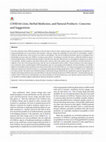
Jundishapur Journal of Natural Pharmaceutical Products, Apr 20, 2022
Since the outbreak of the COVID-19 pandemic in the last days of 2019 in China, medical experts an... more Since the outbreak of the COVID-19 pandemic in the last days of 2019 in China, medical experts and organizations worldwide have proposed guidelines for its prevention and treatment. However, despite the availability of state-of-the-art technologies, modern medicine specialists have so far not been successful in controlling it. This has led traditional medicine experts to propagate their knowledge to prevent and cure COVID-19, creating an open debate. According to scientific literature, traditional medicine experts claim beneficial effects of herbal medicines against viral infections and their effectiveness in controlling the symptoms of respiratory disorders. Modern medicine specialists express their concerns about the quality, safety, and efficacy of herbal medicines, in addition to the risk of herb-drug interactions and the lack of randomized clinical studies. Herbal medicines have been popular since prehistoric times, and during the COVID-19 pandemic, they are increasingly used worldwide. The lack of definite cure and the high cost of available modern medicines have also promoted the use of herbal medicines. An evidence-based approach using herbal medicines with proven antiviral activities or containing compounds providing symptomatic relief in COVID-19 can be considered for clinical studies. The interaction of herbal medicines with modern drugs should also be considered in patients taking them. Traditional and modern medicine aim to provide effective and safe treatment and prevent COVID-19 infection. Considering the ground realities of the COVID-19 crisis and keeping in view the worldwide use of herbal medicines, in our opinion, the pros and cons of their use should be carefully weighed, and practical solutions should be considered.
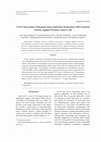
PubMed, 2018
In this research, aerial parts of Euphorbia denticulata Lam were collected from Sanandaj city in ... more In this research, aerial parts of Euphorbia denticulata Lam were collected from Sanandaj city in Kurdistan province at the West of Iran. It was extracted by maceration using acetone as solvent. The isolation of compounds were carried out with repeated column chromatography using silica gel and normal preparative HPLC using YMC-Pack-Sil column and hexane: ethyl acetate as mobile phase. The structures of isolated compounds were elucidated by extensive 1 and 2D-NMR as well as HRESI-MS spectra and the cytotoxicity was done against DU-145 human prostate cancer cell line using standard MTT assay. It afforded a new 12-taraxastane derivative and two known cycloartane triterpenes including: taraxast-12-ene-3β,20,21(α)-triol (1), cycloartane-3β,25-diol (2), and cycloartane-3β,24,25-triol (3). They exhibited cytotoxic effects, with IC50 values of 12.2 ± 2.9, 27.5 ± 4.9, and 18.3 ± 1.4 µM, respectively.
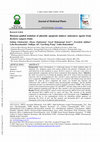
Journal of medicinal plants, Sep 1, 2022
Background: Cancer development is a multi-stage process in which apoptosis plays an important rol... more Background: Cancer development is a multi-stage process in which apoptosis plays an important role. Apoptotic agents from natural products like phenolic compounds can be used effectively in the treatment of cancer. Berberis vulgaris L. fruits are a rich source of natural phenolic compounds and have been evaluated for their apoptotic effects. Objective: this study was carried out to evaluate the apoptotic effect of B. vulgaris fruits in normal and cancerous cells by investigating p53, Bax, and Bcl-2 genes expression and identifying an active compound. Methods: B. vulgaris fruits were extracted with ethanol using maceration method. To yield an active compound, the extract was divided into fractions and subfractions that could be evaluated using chromatography techniques, and the purified compound structure was determined by nuclear magnetic resonance (NMR). The cytotoxic activity of the selected fraction against 3T3 and MCF-7 cell lines along with its effect on the mRNA apoptosis regulating genes like p53, Bax, and Bcl-2 were investigated subsequently. Results: Results showed that B. vulgaris extract increased the mRNA level of p53 and Bax and decreased Bcl-2 mRNA level in cancer cell lines. The structure of the purified compound was determined as the 3-caffeoylquinic acid (chlorogenic acid). Conclusion: B. vulgaris fruit has in vitro antineoplastic activity by stimulating cellular apoptosis via increasing the levels of p53 and Bax proteins and decreasing Bcl-2 and comprises chlorogenic acid as one of its phenolic phytochemicals.
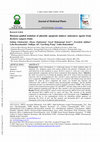
Journal of Medicinal Plants
Background: Cancer development is a multi-stage process in which apoptosis plays an important rol... more Background: Cancer development is a multi-stage process in which apoptosis plays an important role. Apoptotic agents from natural products like phenolic compounds can be used effectively in the treatment of cancer. Berberis vulgaris L. fruits are a rich source of natural phenolic compounds and have been evaluated for their apoptotic effects. Objective: this study was carried out to evaluate the apoptotic effect of B. vulgaris fruits in normal and cancerous cells by investigating p53, Bax, and Bcl-2 genes expression and identifying an active compound. Methods: B. vulgaris fruits were extracted with ethanol using maceration method. To yield an active compound, the extract was divided into fractions and subfractions that could be evaluated using chromatography techniques, and the purified compound structure was determined by nuclear magnetic resonance (NMR). The cytotoxic activity of the selected fraction against 3T3 and MCF-7 cell lines along with its effect on the mRNA apoptosis regulating genes like p53, Bax, and Bcl-2 were investigated subsequently. Results: Results showed that B. vulgaris extract increased the mRNA level of p53 and Bax and decreased Bcl-2 mRNA level in cancer cell lines. The structure of the purified compound was determined as the 3-caffeoylquinic acid (chlorogenic acid). Conclusion: B. vulgaris fruit has in vitro antineoplastic activity by stimulating cellular apoptosis via increasing the levels of p53 and Bax proteins and decreasing Bcl-2 and comprises chlorogenic acid as one of its phenolic phytochemicals.
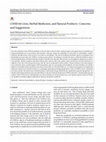
Jundishapur Journal of Natural Pharmaceutical Products
Since the outbreak of the COVID-19 pandemic in the last days of 2019 in China, medical experts an... more Since the outbreak of the COVID-19 pandemic in the last days of 2019 in China, medical experts and organizations worldwide have proposed guidelines for its prevention and treatment. However, despite the availability of state-of-the-art technologies, modern medicine specialists have so far not been successful in controlling it. This has led traditional medicine experts to propagate their knowledge to prevent and cure COVID-19, creating an open debate. According to scientific literature, traditional medicine experts claim beneficial effects of herbal medicines against viral infections and their effectiveness in controlling the symptoms of respiratory disorders. Modern medicine specialists express their concerns about the quality, safety, and efficacy of herbal medicines, in addition to the risk of herb-drug interactions and the lack of randomized clinical studies. Herbal medicines have been popular since prehistoric times, and during the COVID-19 pandemic, they are increasingly used worldwide. The lack of definite cure and the high cost of available modern medicines have also promoted the use of herbal medicines. An evidence-based approach using herbal medicines with proven antiviral activities or containing compounds providing symptomatic relief in COVID-19 can be considered for clinical studies. The interaction of herbal medicines with modern drugs should also be considered in patients taking them. Traditional and modern medicine aim to provide effective and safe treatment and prevent COVID-19 infection. Considering the ground realities of the COVID-19 crisis and keeping in view the worldwide use of herbal medicines, in our opinion, the pros and cons of their use should be carefully weighed, and practical solutions should be considered.
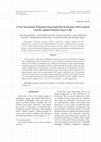
Iranian Journal of Pharmaceutical Research : IJPR, 2018
In this research, aerial parts of Euphorbia denticulata Lam were collected from Sanandaj city in ... more In this research, aerial parts of Euphorbia denticulata Lam were collected from Sanandaj city in Kurdistan province at the West of Iran. It was extracted by maceration using acetone as solvent. The isolation of compounds were carried out with repeated column chromatography using silica gel and normal preparative HPLC using YMC-Pack-Sil column and hexane: ethyl acetate as mobile phase. The structures of isolated compounds were elucidated by extensive 1 and 2D-NMR as well as HRESI-MS spectra and the cytotoxicity was done against DU-145 human prostate cancer cell line using standard MTT assay. It afforded a new 12-taraxastane derivative and two known cycloartane triterpenes including: taraxast-12-ene-3β,20,21(α)-triol (1), cycloartane-3β,25-diol (2), and cycloartane-3β,24,25-triol (3). They exhibited cytotoxic effects, with IC50 values of 12.2 ± 2.9, 27.5 ± 4.9, and 18.3 ± 1.4 µM, respectively.
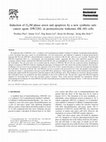
Biochemical Pharmacology, 2001
We studied the effect of DW2282-,{(S)-(ϩ)-4-phenyl-1-[N-(4-aminobenzoyl)-indoline-5-sulfonyl-4,5-... more We studied the effect of DW2282-,{(S)-(ϩ)-4-phenyl-1-[N-(4-aminobenzoyl)-indoline-5-sulfonyl-4,5-dihydro-2-imidazolone]⅐hydrochloride}, a newly developed anti-cancer agent, on cell proliferation, cell cycle progression, and induction of apoptosis in human promyelocytic leukemia (HL-60) cells. DW2282, a diarylsulfonylurea compound, was cytotoxic to HL-60 cells, with an IC 50 of 1.0 g/mL. Treatment with DW2282 fragmented DNA in a concentration-and time-dependent manner, suggesting that these cells underwent apoptosis. Flow cytometric analysis further confirmed that DW2282-treated HL-60 cells were hypodiploid, in terms of DNA content, and were arrested at the G 2 /M phase. The cell cycle arrest was reversible upon the removal of DW2282. HL-60 cells also underwent distinct morphological changes in response to DW2282 treatment, including the appearance of elongated cells with conical tails and other apoptotic characteristics. G 2 /M phase cell cycle arrest was accompanied by a decrease in the levels of cdc2, a protein that plays a critical role for progression through the G 2 /M phase. Treatment of HL-60 cells with DW2282 was also associated with decreased levels of the anti-apoptotic protein Bcl-2, activation of caspase-3, and proteolytic cleavage of poly(ADP-ribose) polymerase. Taken together, these results demonstrate that DW2282 dramatically suppressed HL-60 cell growth by inducing apoptosis after G 2 /M phase arrest. These findings are consistent with the possibility that G 2 /M phase arrest was mediated by the down-regulation of cdc2 levels in HL-60 cells. The data also suggest that DW2282 triggered apoptosis by decreasing Bcl-2 levels and activating caspase-3 protease. These results provide important new information towards understanding the mechanisms by which DW2282 and other diarylsulfonylureas mediate their therapeutic effects.

Fitoterapia, 2013
Dichloromethane-acetone extract of Euphorbia erythradenia Bioss., a spurge endemic to the Iran, a... more Dichloromethane-acetone extract of Euphorbia erythradenia Bioss., a spurge endemic to the Iran, afforded four novel tetrahydroingenol diterpenes, one new myrsinane type diterpene, and two known triterpenes. Tetrahydroingenoids are novel compounds not only for the double bond reduction but also for their unique hydroxylation pattern at C-11 and C-13. The structures of these compounds were elucidated by spectroscopic methods, and especially 2D NMR measurements. The biological effects of the compounds were done by the MTT and Annexin V-FITC &amp;amp;amp;amp;amp;amp;amp;amp;amp;amp;amp;amp;amp;amp;amp;amp;amp;amp;amp; PI staining assays on different cancer cell lines. The results obtained on EJ-138, CAOV-4, and OVCAR-3 cell lines suggested that tetrahydroingenanes inhibit cell proliferation through apoptosis in cancer cell lines. In conclusion, the new pattern of hydrogenation and hydroxylation of these compounds compared to other ingenoids, along with their apoptosis inducing properties on cancer cells, makes them of great interest for more investigation.
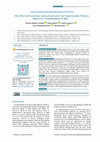
Journal of Advances in Medical and Biomedical Research
10.30699/jambs.29.134.139 Background & Objective: Acetaminophen is known as the most common agent... more 10.30699/jambs.29.134.139 Background & Objective: Acetaminophen is known as the most common agent which causes hepatic and renal toxicity in human and experimental animals at supratherapeutic doses. The current study investigated the protective effects of Descurainia sophia seed extract on the acetaminophen-induced nephrotoxicity markers in male mice. Materials & Methods: Experimental male mice (n=60, Swiss albino mice) were divided into six groups as follows: Group A (control group), Group B (acetaminophen group), and treatment groups including T1, T2, T3, and T4 (D. sophia seed extract groups). Toxicity was induced by acetaminophen (500 mg/kg). The mice administered D. sophia seed extract for 7 days in doses of 50, 100, 200, and 300 mg/kg. In the next step, animals were euthanized 24 hours after acetaminophen administration. Blood samples were collected. Serum levels of blood urea nitrogen (BUN), creatinine, and uric acid were analysed. Furthermore, kidney tissues were removed for histopathological examination via haematoxylin and eosin staining. Results: Our data revealed that acetaminophen increased the levels of BUN, creatinine and uric acid (P<0.05). Pre-treatment of D. sophia seed extract decreased the serum BUN, creatinine and uric acid significantly compared to the acetaminophen group (P<0.05). Additionally, in histopathological examination, D. sophia extract had restored acetaminophen-induced nephrotoxicity, particularly in the dose of 300 mg/kg. Conclusion: The present findings suggested that oral administration of D. sophia seed extract has protective effect against acetaminophen nephrotoxicity in mice.
Journal of The Saudi Pharmaceutical Society, 2010
It has been observed cannabinoid CB1 receptor signalling and the levels of endocannabinoid ligand... more It has been observed cannabinoid CB1 receptor signalling and the levels of endocannabinoid ligands significantly increased in the basal ganglia and cerebrospinal fluids of Parkinson’s disease (PD) patients. These evidences suggest that the blocking of cannabinoid CB1 receptors might be beneficial to improve movement disorders as a sign of PD. In this study, a dose–response study of the effects of
Journal of The Saudi Pharmaceutical Society, 2010
It has been observed cannabinoid CB1 receptor signalling and the levels of endocannabinoid ligand... more It has been observed cannabinoid CB1 receptor signalling and the levels of endocannabinoid ligands significantly increased in the basal ganglia and cerebrospinal fluids of Parkinson’s disease (PD) patients. These evidences suggest that the blocking of cannabinoid CB1 receptors might be beneficial to improve movement disorders as a sign of PD. In this study, a dose–response study of the effects of


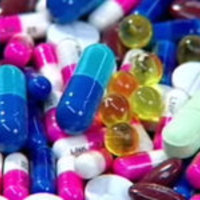


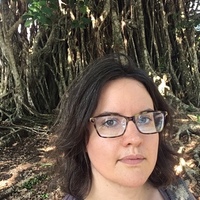

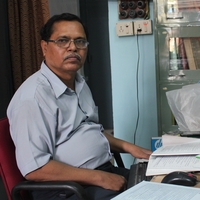



Uploads
Papers by Seyed Mohammad Zarei